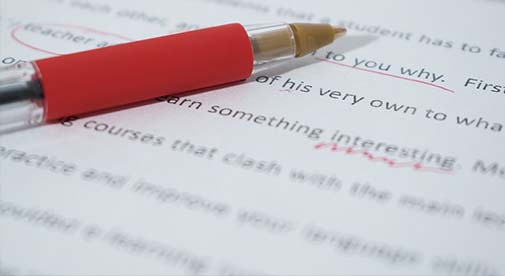For years I confidently wrote letters, reports, proposals, technical articles, and manuals. After I retired from the corporate world, I started my travel writer’s journey. I plodded along sending queries and stories, all created in Microsoft Word. I was sure my work was above par when it came to spelling, punctuation, and grammar. Then one editor’s note crushed me. “Rework this. It’s not my job to check your spelling and punctuation. I can’t use it as is.” The words are engraved in my memory.
We have all had tiny typos slip through in our writing from time to time. But nothing will push an editor’s finger toward the delete button faster than an article with careless mistakes.
Editors are very busy people—you will benefit if you make their lives easier in every way you can. Always follow writer’s and photographer’s guidelines, include your contact information, be professional, and proofread, proofread, and proofread again!
Here’s a handy checklist with four proven tips to make sure you are always editor-ready:
- Before you write:
- Research many travel magazines and websites, and choose your initial targets. Check out:
- Editorial calendars.
- What has been published recently (so you don’t overlap).
- Style of writing, photographs, and publications.
- Writer’s guidelines.
- Decide on an angle for your story and the pictures you will submit.
- Research many travel magazines and websites, and choose your initial targets. Check out:
- Pitching a query by email:
- Make your subject line count. Remember: you only have between three and seven seconds to get your editor’s attention.
- Lead with a dazzling description.
- If you have photos, say so early in your email.
- Submission:
- Submit the same article to several editors, but remember to strictly follow the writer’s and photographer’s guidelines for each.
- Pay attention to the publication rights required by each publication.
- Always attach your contact information as specified for the type of publication.
- Keep meticulous records of what you submit and when, what is accepted, whether it is on-spec, paid or unpaid, and how much you earn.
- Pitch your next idea when you submit the draft of an accepted article.
- General guidelines:
-
- Always be professional.
- Make good contacts in your own location—you never know when you will be called upon to write an article.
- Follow up with contacts in a timely way and send thank-you messages.
Remember: (I cannot say this enough) always follow writer’s and photographer’s guidelines, and proofread, proofread, and proofread again. There are many proofreading apps available but one I personally use is called Grammarly. It’s free and very easy to use.

